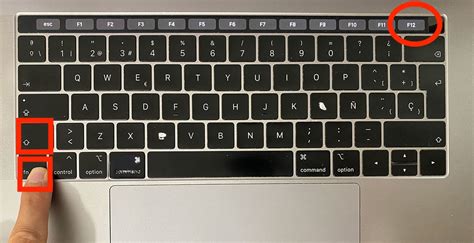1. Ways to Disable Keyboard on Mac
The keyboard is an integral part of using a Mac, allowing users to type, navigate, and control various functions. However, there may be instances where you need to disable the keyboard temporarily or permanently, such as when cleaning the keyboard or using an external keyboard. In this tutorial, we will discuss five methods to disable the keyboard on your Mac.
Using Accessibility Keyboard Preferences

One option to disable the keyboard on your Mac is by using the Accessibility Keyboard Preferences. This method is ideal for temporarily disabling the built-in keyboard while using an external keyboard or for individuals with accessibility needs.To utilize this feature:1. Click on the Apple icon in the top-left corner of your screen.2. Select "System Preferences" from the drop-down menu.3. In the System Preferences window, click on "Accessibility."4. Navigate to the "Keyboard" tab on the left-hand side.5. Check the option "Enable Accessibility Keyboard."
Using Third-Party Software
While macOS offers native features to disable the keyboard, there are also third-party software solutions available. These software options provide more advanced features and flexibility for disabling the keyboard and may be preferred by certain users. Search for reputable third-party software on trusted websites or the Mac App Store, ensuring that the software is compatible with your macOS version.
Disabling Keyboard via Terminal
Another method involves disabling the keyboard using Terminal, which is a command-line interface on your Mac. This approach is suitable for users comfortable with executing commands and provides a more technical solution for disabling the keyboard.To disable the keyboard via Terminal:1. Open the Terminal application on your Mac.2. Type the command: "sudo kextunload /System/Library/Extensions/AppleUSBTopCase.kext/Contents/PlugIns/AppleUSBTCKeyboard.kext/."3. Press "Enter" and provide your administrative password when prompted.4. The keyboard should now be disabled. Restart your Mac to re-enable the keyboard.
Physically Disconnecting the Keyboard
If you prefer a non-software solution, physically disconnecting the keyboard is an option. However, this method only applies if you are using an external keyboard with a USB connection. To physically disconnect the keyboard:1. Turn off your Mac.2. Unplug the USB cable connecting the keyboard to your Mac.3. Power on your Mac.4. The built-in keyboard will remain disabled until you reconnect it or restart your Mac.
Disabling Keyboard Shortcut Triggers
In some cases, you may find certain keyboard shortcuts triggering unwanted functions or interfering with specific applications. To avoid such issues, you can disable specific keyboard shortcut triggers.To disable keyboard shortcuts:1. Launch the System Preferences window as explained in the first method.2. Click on "Keyboard" within the System Preferences window.3. Navigate to the "Shortcuts" tab.4. Select the specific shortcut category you wish to modify, such as "App Shortcuts" or "Mission Control."5. Untick the checkboxes next to the shortcuts you want to disable.In conclusion, Mac provides various methods to disable the keyboard, allowing users to choose the most convenient option based on their specific needs. Whether you prefer using system preferences, third-party software, or physically disconnecting the keyboard, you can easily disable the keyboard on your Mac. Remember to re-enable the keyboard after completing the desired tasks or troubleshooting steps.
No comments:
Post a Comment